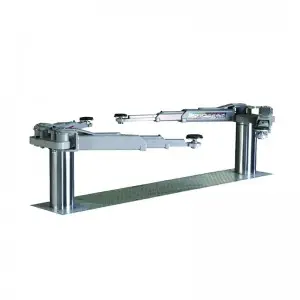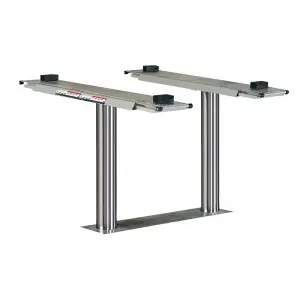Cylinders have been an integral part of human civilization for thousands of years, serving a multitude of purposes in various fields. From the emergence of the wheel to the rise of modern engineering, cylinders have played a pivotal role in shaping our world. In this article, we will delve into the history, uses, and mechanics of cylinders, exploring the many ways they have influenced our lives.
Dating back to around 3500 BCE, the invention of the wheel and axle introduced the concept of cylinders. By creating a solid cylindrical shape to facilitate movement, early humans revolutionized transportation and construction. This discovery marked a pivotal moment in human history, leading to the development of chariots, carts, and the infrastructure required for a more interconnected society.

The Fascinating World of Cylinders: A Deep Dive Into Their History, Uses, and Mechanics
As civilizations flourished, the application of cylinders expanded. In ancient Egypt, the construction marvel of pyramids involved the use of large cylindrical stones. These precisely shaped cylinders helped distribute the weight of the heavy stones and contributed to the stability and longevity of these monumental structures.

The Fascinating World of Cylinders: A Deep Dive Into Their History, Uses, and Mechanics
Greek mathematician and engineer Archimedes played a crucial role in understanding the mechanics of cylinders. He formulated the principles of buoyancy, famously exclaiming “Eureka!” when he realized that the displacement of water by an object is equal to the weight of the object. His knowledge paved the way for advancements in shipbuilding, allowing for the construction of more efficient vessels with cylindrical hulls.
Fast forward to the industrial revolution, and cylinders became central to the development of machinery and engines. Steam engines, for instance, relied on cylinders to convert heat energy into mechanical motion. These mechanisms transformed transportation, manufacturing, and ultimately, the entire course of human civilization.
The advent of the internal combustion engine brought even more importance to cylinders. Be it in cars, motorcycles, or power generators, the combustion process occurs within a cylindrical chamber. The design and arrangement of cylinders in an engine have a direct impact on its performance, with configurations varying from inline to V-shaped, and even radial arrangements.
Cylinders are not limited to the realm of transportation and machinery alone. In the world of science and research, they find applications as precise measuring tools. Graduated cylinders, for instance, are used in laboratories to measure the volume of liquids accurately. Similarly, the invention of the aneroid barometer, with its cylindrical shape, revolutionized weather forecasting by measuring atmospheric pressure.
Even everyday items like aerosol cans owe their functionality to the humble cylinder. The pressurized contents inside are dispensed by pushing down on the nozzle, causing the liquid to be forced through a tiny opening, creating a fine mist or spray.

The Fascinating World of Cylinders: A Deep Dive Into Their History, Uses, and Mechanics
Furthermore, cylinders have a fascinating application in the field of optics. Cameras, telescopes, and microscopes utilize cylindrical lenses to manipulate light and enable focal adjustments. These cylindrical lenses help photographers capture stunning images, astronomers observe celestial objects with precision, and scientists visualize microorganisms and particles.
As technology continues to advance, cylinders will undoubtedly play an increasingly significant role. From the development of more efficient engines to groundbreaking innovations in various scientific fields, their influence will continue to shape our future. Whether it’s the grandeur of ancient structures or the sleek machinery of the digital age, cylinders remain an essential cornerstone of human progress.car quick lift
